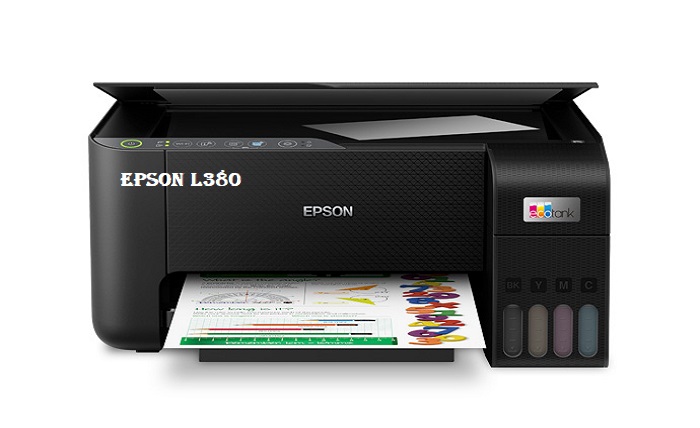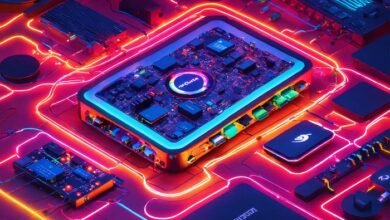The Epson L380 Ink Tank Printer: Your Ultimate Guide to Affordable, High-Volume Printing

In the realm of home and small office printing, the constant need to replace expensive ink cartridges has long been a source of frustration and financial drain. Enter the revolutionary solution: the ink tank system. Among the pioneers and stalwarts of this category stands the Epson L380, a printer that has garnered a legendary reputation for transforming the economics of printing. This comprehensive guide delves deep into every facet of the Epson L380, exploring its design, functionality, and the undeniable value proposition it offers. If you are someone who prints frequently, whether it be documents, photographs, or school projects, and you are weary of exorbitant ink costs, understanding the capabilities of the Epson L380 is the first step toward liberation. This printer isn’t just a device; it’s a strategic investment for anyone looking to print freely without watching their wallet.
What is the Epson L380 and Who is it Designed For?
The Epson L380 is a dedicated ink tank printer, a part of Epson’s innovative EcoTank lineup. Unlike traditional printers that use disposable cartridges, the Epson L380 features integrated, high-capacity ink tanks that users can easily refill using bottled ink. This fundamental shift in design is aimed squarely at one primary goal: drastically reducing the cost per page. The Epson L380 is a multifunction device, meaning it combines printing, scanning, and copying capabilities into a single, compact unit. It utilizes Epson’s proprietary PrecisionCore printhead technology to deliver reliable and consistent output.
This printer is meticulously designed for a specific user base. It is the ideal workhorse for home offices, small businesses, students, and families with high printing demands. If you find yourself running to the store for new cartridges every few months, the Epson L380 is engineered for you. It is perfect for users who print hundreds of pages per month and require a cost-effective, hassle-free solution. However, it may not be suited for users with minimal printing needs who print only a handful of pages per year, as the initial investment is higher than that of a basic cartridge printer. The core value of the Epson L380 is realized through volume, making it the champion of high-frequency, low-cost printing.
Unboxing and First Impressions: A Look at the Design and Build Quality
Upon unboxing the Epson L380, the first thing you’ll notice is its distinct and functional design. The printer sports a predominantly black plastic chassis that, while not overly premium, feels sturdy and built for durability rather than aesthetics. The most prominent design feature is the set of transparent ink tanks mounted on the right-front side of the device. These tanks are a key advantage of the Epson L380, allowing users to monitor ink levels at a glance without any guesswork or software estimates. The control panel is straightforward and user-friendly, featuring physical buttons for power, copy, and a stop button, along with LEDs for status indicators.
The build quality of the Epson L380 reflects its purpose as a practical, no-frills workhorse. It is designed to occupy a modest footprint on a desk, making it suitable for spaces where real estate is limited. The input tray can hold up to 100 sheets of plain paper, and the output tray folds neatly into the body when not in use. The integrated flatbed scanner on top has a lid that opens to accommodate thicker items like books. Every aspect of the Epson L380‘s design prioritizes ease of use and maintenance over flashy looks, assuring you that this device is built for the long haul, focusing purely on performance and reliability.
The Heart of the Matter: Setting Up Your Epson L380 Printer
The setup process for the Epson L380 is a critical first step and is slightly different from that of a cartridge-based printer. Inside the box, you will find the printer, power cables, a USB cable, and a set of Epson ink bottles in four colors (Cyan, Magenta, Yellow, and Black). The initial setup involves installing the printhead and charging the ink system, a process that is meticulously guided by the included quick start guide. The bottles are uniquely shaped and colored to prevent incorrect refilling, a thoughtful design that ensures a mess-free experience.
You must carefully pour the entire contents of each bottle into its corresponding tank on the Epson L380. The printer then needs to be connected to power and turned on to initiate an initial ink charging process. This process, which primes the printhead and fills the ink lines, can take approximately 10-15 minutes and consumes a small amount of ink. It is a one-time procedure that is crucial for ensuring optimal performance from your Epson L380. After this, you install the drivers from the provided CD or, more commonly, by downloading the latest ones from the Epson website. The entire setup, while requiring a bit more time and care than unboxing a cartridge printer, is a simple and well-documented process that unlocks the incredible value of the Epson L380 system.
Revolutionary Economics: Understanding the Printing Cost of the Epson L380
This is where the Epson L380 truly shines and justifies its reputation. The economics of printing with this machine are nothing short of revolutionary. Each set of ink bottles provided with the printer contains enough ink to print an astounding number of pages. Specifically, the black ink bottle yields approximately 4,500 pages, while each color bottle (cyan, magenta, yellow) yields about 7,500 pages. This is in stark contrast to a standard cartridge, which may only last for a few hundred pages at best.
When you do the math, the cost per page with the Epson L380 plummets to a fraction of a cent. The black ink cost per page is incredibly low, and the color cost per page is similarly minuscule. This translates to savings that quickly recover the initial purchase price of the Epson L380. For a user who prints even a few hundred pages a month, the investment can pay for itself within a year compared to the ongoing cost of cartridge replacements. The refill bottles for the Epson L380 are also significantly cheaper than buying a full set of new cartridges, making ongoing maintenance affordable and predictable. This economic model is the core selling point and the most compelling reason to choose the Epson L380.
Performance Review: Print Quality, Speed, and Everyday Reliability
Beyond cost, a printer must perform its primary duty effectively. The Epson L380 utilizes a 4-color Claria ink system (Dye-based) and a micro piezo printhead. In terms of print quality, it delivers excellent results for its class. Text documents are printed with sharp, crisp, and smear-resistant black text, making it ideal for reports, essays, and official documents. Color graphics and images come out vibrant and with good detail, suitable for school projects, presentations, and casual photo printing. While it may not match the archival quality and fade resistance of pigment-based inks used in higher-end photo printers, the output is more than satisfactory for everyday use.
The print speed of the Epson L380 is rated at a respectable ISO speed, which translates to about 10 pages per minute for black and white documents and slightly less for color. In real-world usage, these speeds are adequate for home and small office environments. It is not built for lightning-fast production printing but for steady, reliable output. The Epson L380 is renowned for its reliability. The PrecisionCore printhead is designed for longevity, and the integrated ink system minimizes the risk of printhead clogs, a common issue in printers that are used infrequently. For consistent, daily printing tasks, the Epson L380 proves to be a dependable and efficient partner.
Beyond Printing: Exploring the Scanning and Copying Features
As a multifunction device, the Epson L380 offers more than just printing. It is equipped with a flatbed color scanner that boasts a optical resolution. This scanner is capable of producing decent quality digital copies of documents, photographs, and even 3D objects. The scanning functionality is perfect for digitizing old photos, creating PDF copies of important documents, or scanning a page from a book. The software provided with the Epson L380 allows for easy scanning to various destinations, including email and cloud storage.
The copy function is straightforward and accessible directly from the printer’s control panel. By simply placing a document on the scanner glass and pressing the copy button, the Epson L380 can quickly produce physical copies. You can adjust the number of copies and select between black & white or color copying. While the copying speed is dependent on the scanning and printing processes, it is perfectly functional for making quick duplicates of documents, forms, or handouts. These additional features make the Epson L380 a versatile central hub for all your document management needs, adding significant value to its core printing prowess.
Long-Term Ownership: Maintenance, Troubleshooting, and Pros & Cons
Owning an Epson L380 is generally a low-maintenance experience, but there are key points to ensure its longevity. The most important practice is to print at least a few color and black & white pages every week to prevent the ink from drying and clogging the printhead—a recommendation for any inkjet printer. The Epson L380 includes a built-in utility for printhead nozzle checks and cleaning, which should be used if you notice any streaks or missing lines in your printouts.
Common troubleshooting steps for the Epson L380 usually involve running a head cleaning cycle or ensuring that the paper is loaded correctly. The printer’s status LEDs provide clear warnings for issues like paper jams or low ink levels, though the latter will be a rare occurrence. Over the long term, the Epson L380 is celebrated for its pros: phenomenally low printing costs, high page yields, reliable print quality, and multifunctionality. The cons to consider are its initial higher purchase price compared to cartridge printers, the use of dye-based inks (which may not be water-resistant), and a print speed that is adequate but not exceptional. For its target audience, the pros of the Epson L380 overwhelmingly outweigh the cons.
Conclusion
The Epson L380 is far more than just a printer; it is a paradigm shift in how we approach the cost of printing. By eliminating the expensive cartridge model and replacing it with an efficient, high-yield ink tank system, Epson has created a device that empowers users to print without restraint. Its combination of ultra-low printing costs, solid print quality, reliable performance, and added scanning/copying functions makes it an unbeatable value proposition for students, home offices, and small businesses with substantial printing needs. While the initial investment is higher, the long-term savings are substantial and undeniable. If you print frequently and are tired of the endless cycle of buying cartridges, the Epson L380 is arguably one of the smartest and most rewarding investments you can make.
FAQs
1. Is the Epson L380 a good printer for printing photos?
While the Epson L380 can print photos with good color vibrancy, it uses dye-based inks which are not as water-resistant or fade-resistant as pigment inks found in dedicated photo printers. It is excellent for casual photo printing but not recommended for professional-grade or archival-quality photographs.
2. How often do I need to refill the ink on the Epson L380?
The frequency depends entirely on your printing volume. Given the high page yield of each bottle (4,500 black / 7,500 color pages), a typical home user may only need to refill the Epson L380 once a year or even less frequently.
3. Can I use third-party or compatible ink with my Epson L380?
It is strongly recommended to use only genuine Epson inks. Using third-party inks can void your warranty, lead to printhead clogs, and result in poor print quality and potential damage to your Epson L380 that is not covered by service.
4. What should I do if my Epson L380 printhead gets clogged?
The printer has a built-in head cleaning utility accessible through the driver software. Run this utility once or twice. If the issue persists after 24 hours, avoid repeated cleaning as it wastes ink. Contact Epson support for further guidance on maintaining your Epson L380.
5. Does the Epson L380 support wireless printing?
No, the standard Epson L380 model only supports connectivity via a USB cable. For wireless functionality, you would need to look at a different model in the EcoTank series, such as the L385 or L485, which include Wi-Fi connectivity.




